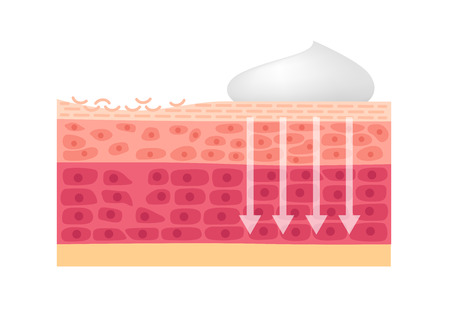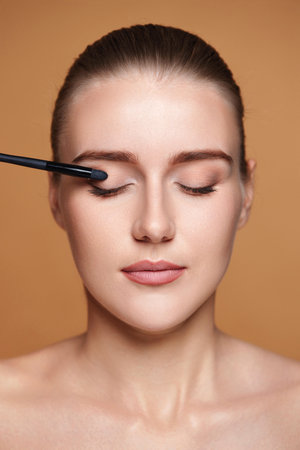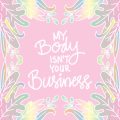1. Understanding Cleansing Brushes
Cleansing brushes have become a staple in many skincare routines, especially for those looking to achieve a deeper clean than what hands alone can provide. Essentially, a cleansing brush is a handheld device—either manual or powered—that uses bristles or silicone nubs to gently exfoliate and cleanse the skin. These tools work by loosening dirt, oil, and makeup from the pores through gentle mechanical motion, making them popular among people who want that squeaky-clean feeling. What makes cleansing brushes appealing is their ability to cater to various skin types: for oily or combination skin, they help control excess sebum and prevent clogged pores; for dry or sensitive skin, some models offer ultra-soft bristles and customizable speeds for a more delicate touch. Beyond cleansing, regular use can promote smoother texture and enhance the absorption of serums and moisturizers. However, it’s important to recognize that not all brushes are created equal—and how you use them will determine whether you get glowing results or risk over-exfoliation.
Choosing the Right Brush for Your Skin
Selecting the perfect cleansing brush is essential for reaping the benefits of deep cleaning without irritating your skin. Not all brushes are created equal, and matching the right tool to your skin type, sensitivity, and lifestyle can make all the difference. Below is a quick guide to help you find your ideal match.
Brush Types and Their Benefits
| Skin Type | Recommended Brush Type | Key Features |
|---|---|---|
| Oily/Combination | Bristle Brush | Deep cleansing, helps unclog pores, controls excess oil |
| Sensitive | Silicone Brush | Gentle, hypoallergenic, easy to clean, reduces irritation risk |
| Dry/Mature | Sonic Vibrating Brush | Stimulates blood flow, enhances product absorption, less abrasive |
Consider Sensitivity Level and Lifestyle
If your skin is prone to redness or irritation, opt for ultra-soft bristles or a silicone brush head that’s specifically labeled “for sensitive skin.” These options reduce friction and are less likely to cause microtears. For those with active lifestyles or who travel often, portable and waterproof designs can keep your skincare routine consistent and hassle-free.
Pro Tip:
Always check if replacement heads are available and how often they need to be changed—this ensures hygiene and maintains effectiveness.
Your Personalized Approach Matters
The best cleansing brush is one that you’ll actually use regularly. Take into account how much time you spend on skincare daily, whether you prefer manual or automatic devices, and your comfort with technology. By aligning your choice with your unique needs, you set yourself up for clear, healthy skin without risking over-exfoliation.

3. How Often Should You Use a Cleansing Brush?
When it comes to using a cleansing brush, there’s no one-size-fits-all answer—it really depends on your unique skin type and concerns. For those with oily or combination skin, you might find that using a cleansing brush up to three times per week helps keep pores clear without over-stripping your natural oils. However, if your skin is dry or sensitive, less is more. Using a brush just once or twice a week can help maintain smoothness while protecting your skin’s delicate barrier from irritation or redness. Pay attention to how your face feels after each use—if you notice stinging, tightness, or extra dryness, it’s probably time to scale back. Remember, consistency matters more than frequency; gentle regular care is far better than aggressive daily scrubbing. And no matter your skin type, always follow up with moisturizer to lock in hydration and support recovery. Bottom line: listen to your skin and let its needs guide you—your perfect routine may look different from someone else’s, and that’s totally okay.
4. Building a Safe Cleansing Routine
Integrating a cleansing brush into your skincare routine can feel like a game-changer, but it’s essential to do so thoughtfully to prevent over-exfoliation. Here’s a step-by-step guide tailored for American lifestyles and skin needs:
Step 1: Choose the Right Brush for Your Skin Type
Not all brushes are created equal. Consider soft bristles for sensitive or dry skin, while those with oily or combination skin might opt for firmer bristles or silicone options.
| Skin Type | Recommended Brush Type |
|---|---|
| Sensitive/Dry | Ultra-soft bristles or silicone heads |
| Oily/Combination | Medium-firm bristles or textured silicone heads |
| Normal | Standard soft bristles |
Step 2: Start Slow and Build Up Frequency
If you’re new to cleansing brushes, begin by using the device just once or twice per week. Monitor how your skin reacts before increasing frequency—most dermatologists recommend no more than three times a week to avoid irritation.
Step 3: Pair with Gentle Cleansers
Avoid harsh scrubs or cleansers with physical exfoliants when using a brush. Opt for a gentle, hydrating cleanser to maintain your skin barrier and keep things balanced.
Step 4: Use Proper Technique
Let the brush glide across your face in gentle, circular motions without applying excess pressure. Spend about 20 seconds per facial zone (forehead, cheeks, chin), making sure not to linger too long in one area.
Cleansing Time Breakdown Table
| Facial Zone | Recommended Time (Seconds) |
|---|---|
| Forehead | 20 |
| Each Cheek | 20 |
| Nose & Chin | 20 |
| Total Duration | 60-80 seconds max |
Step 5: Follow Up with Soothing Skincare
After cleansing, always apply a calming toner and moisturizer. If it’s daytime, finish with SPF as your freshly cleansed skin will be more vulnerable to UV rays.
Pro Tip:
If you notice redness, dryness, or stinging, scale back on brush use and focus on repairing your moisture barrier with hydrating products.
5. Spotting Signs of Over-Exfoliating
One of the most important parts of using a cleansing brush wisely is learning to recognize when your skin has had enough. Over-exfoliation can sneak up on you, especially if youre excited about how fresh and clean your face feels after each use. However, too much of a good thing can lead to irritation, sensitivity, and even breakouts. Watch out for early signs such as persistent redness, stinging, tightness, or unusual dry patches—these are your skin’s way of telling you it needs a break. If you notice any of these symptoms, don’t panic! The best move is to scale back your brush usage immediately. Switch to a gentler cleanser, focus on hydration with soothing moisturizers, and avoid other exfoliating products until your skin calms down. Listening to what your skin is telling you and adjusting your routine accordingly is key to maintaining that healthy glow without going overboard.
6. Tips for Post-Brush Skincare
After using a cleansing brush, your skin deserves some extra TLC to keep it calm, hydrated, and protected. Here are some expert-backed tips and recommendations for post-brush skincare that will help you get the glow without going overboard:
Choose a Gentle Toner
Right after cleansing, reach for an alcohol-free toner with soothing ingredients like chamomile or aloe vera. This helps restore your skin’s pH balance and preps it for the next steps—skip anything with astringents or heavy fragrances.
Hydrate and Nourish
Your skin may feel extra thirsty post-exfoliation. Opt for a lightweight, fragrance-free moisturizer packed with ceramides or hyaluronic acid to lock in moisture without clogging pores. Look for products labeled as “non-comedogenic” if you’re prone to breakouts.
Must-Have Products:
- Ceramide-rich moisturizers (like CeraVe Daily Moisturizing Lotion)
- Soothing serums containing niacinamide or panthenol
- Aloe vera gel for immediate relief on sensitive areas
Don’t Forget Sunscreen
Your freshly exfoliated skin is more vulnerable to UV damage, so applying a broad-spectrum SPF 30 or higher every morning is non-negotiable—even if you’re mostly indoors. Mineral sunscreens with zinc oxide or titanium dioxide are great options for sensitive skin.
Treat Yourself to a Calming Mask
If your skin feels irritated, consider using a calming mask once or twice a week. Look for ingredients like oatmeal, calendula, or squalane to reduce redness and support the skin barrier.
Pro-Tip:
If you notice any stinging, redness, or dry patches after brushing, give your skin a break from active treatments (like retinoids or acids) until it feels balanced again. Listening to your skin is key—sometimes less really is more!
7. FAQs About Cleansing Brushes
Common questions and concerns answered to help you make confident choices in your daily routine.
How often should I use a cleansing brush?
Most dermatologists recommend using a cleansing brush 2-3 times per week, especially if you have sensitive or dry skin. If your skin is oily or more resilient, you may be able to use it more frequently. Always listen to your skin and cut back if you notice irritation.
Can I use my cleansing brush with any cleanser?
Cleansing brushes work best with gentle, non-abrasive cleansers. Avoid exfoliating cleansers or those with microbeads, as they can increase the risk of over-exfoliation. Look for sulfate-free and hydrating formulas for the best results.
Will using a cleansing brush cause breakouts?
If used properly and cleaned regularly, a cleansing brush shouldn’t cause breakouts. However, overuse or using a dirty brush head can introduce bacteria and irritate your skin, leading to acne. Make sure to clean your brush head after every use and replace it as recommended by the manufacturer.
What’s the best way to clean my cleansing brush?
After each use, rinse the brush head thoroughly with warm water and gentle soap. Allow it to air dry completely between uses. Deep clean your brush head at least once a week by soaking it in a mixture of water and mild antibacterial soap.
Can I share my cleansing brush with someone else?
It’s best not to share your cleansing brush—even if you switch out brush heads—as bacteria can linger on the device itself. Sharing increases the risk of spreading germs and skin infections.
Is it safe for all skin types?
Cleansing brushes can be suitable for most skin types when used properly. Those with very sensitive or compromised skin (like active eczema or rosacea) should consult a dermatologist before incorporating one into their routine. Adjust frequency and pressure based on how your skin responds.
Still unsure about something?
If you have additional questions or unique skincare needs, don’t hesitate to reach out to a dermatologist or licensed esthetician. Personalized advice will always help you make the most confident decisions for your skin health.


